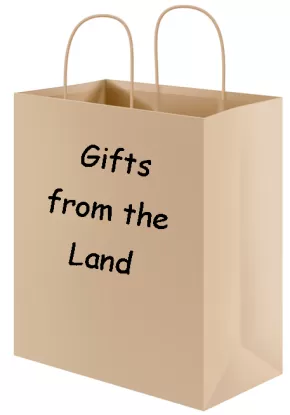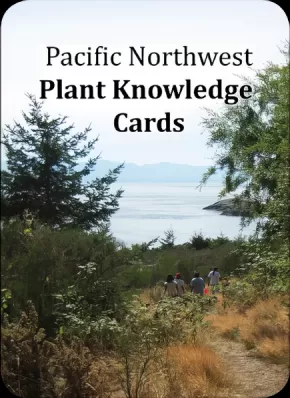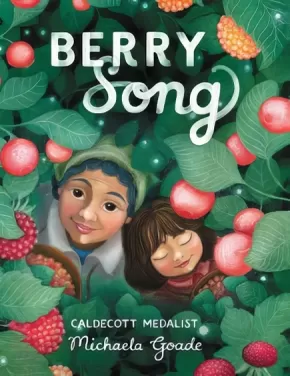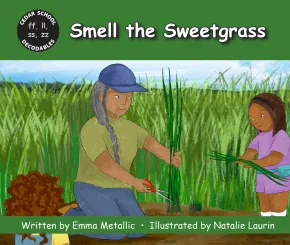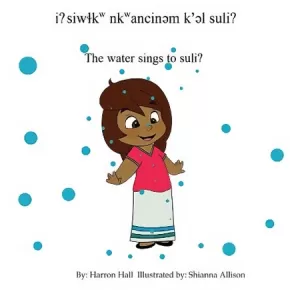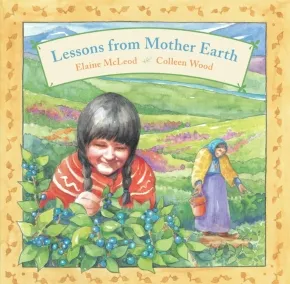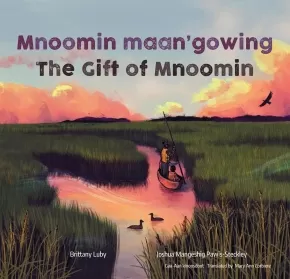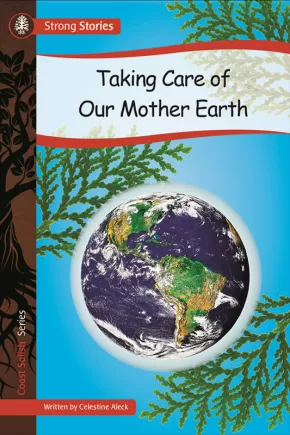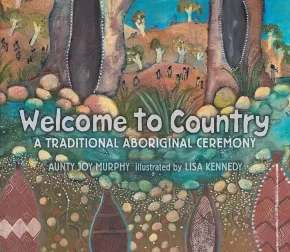
Learn at Home-Homeschool Theme Bundle: Gifts from the Land
$278.53
Text Content Territories:
Indigenous American; Native American; Indigenous Canadian; First Nations; Métis;
Status: Available
Other Categories:
Strong Nations Bundles | Learn at Home / Homeschool Bundles | Environmental Awareness
Details:
This Learn at Home/Homeschool Theme Bundle includes resources for learning about gifts from the land.
Educator Information
Included in our Learn at Home/Homeschool Theme Bundles are fiction and nonfiction titles. Some are independent reads, some are read alouds, and some provide parent/caregiver support or are an interactive title full of activities. As well, some of the bundles contain a puppet, game, or other learning resources.
Authenticity Note: Some products included in our bundles may not be Indigenous but are useful supplementary resources. See individual items below for more details.
● The listed materials for this bundle
can be purchased as a full bundle or separately. To purchase the full bundle click on the "Add to
Basket" button above (the first one on this page).
● To purchase items individually, click the "Add to Basket" buttons below, beneath the individual
item titles.
Family Resources
Native American Gardening: Stories, Projects, and Recipes for Families
$41.44
Format:
Paperback
Text Content Territories:
Indigenous American; Native American;
Reading Level: N/A
ISBN / Barcode: 9781555911485
Synopsis:
Synopsis:
Learn how to plan and prepare a garden site, celebrate the harvest, create traditional gardens, such as the "˜Three Sisters Garden" of corn, beans, and squash, and make Native American crafts such as gourd rattles and corn husk dolls, and use its many recipes to cook Native meals.
Additional Information
176 pages | 1.11" x 1.11"
Pacific Northwest Plant Knowledge Cards
 $39.95
$39.95

Country of Origin:
Size:
3.625 inches x 5 inches
Text Content Territories:
Indigenous American; Indigenous Canadian;
ISBN / Barcode: 9781771743457
Synopsis:
Synopsis:
This 72 card set highlights 65 edible and medicinal plants. The cards describe traditional Indigenous uses and ways of harvesting each plant and feature several Indigenous languages.
Take the cards out on walks to help identify plants and their uses and keep the old ways strong. Use these cards as an inspiration to talk to an Elder or Knowledge Keeper!
Educator Information
72 edible and medicinal plant cards are found within these categories: Tree, Berry, Flower, Shrub, and Plant.
A percentage of proceeds is donated to the Pepaken Hautw Foundation to support their efforts in land-based education and ecosystem restoration. To find out more, please visit https://www.pepakenhautw.com/.
Additional Information
72 Card Set | 3.625" x 5" | ISBN: 9781771743457
Fiction
A Walk on the Shoreline
$12.95
Artists:
● Qin Leng
Format:
Paperback
Text Content Territories:
Indigenous Canadian; Inuit;
ISBN / Barcode: 9781772272697
Synopsis:
Synopsis:
Like A Walk on the Tundra, A Walk on the Shoreline introduces young readers to unique plants and animals found in the Arctic, as well as the traditional Inuit uses for the various species.
Young Nukappia can’t wait to get out to his family campsite on the shoreline. After spending all year in the south with his adoptive parents, Nukappia always looks forward to his summer visits with his birth family. After spending one night in town, Nukappia and his uncle Angu begin the long walk down the shore to the family summer campsite, where all of Nukappia’s cousins and aunts and uncles are waiting for him. Along the way, Nukappia learns that the shoreline is not just ice and rocks and water. There is an entire ecosystem of plants and animals that call the shoreline home. From seaweed to clams to char to shore grasses, there is far more to see along the shoreline than Nukappia ever imagined.
Reviews
“A Walk on the Shoreline also has a full-colour glossary of the plants and animals that Nukappia encounters along the way, including photographs, quick facts and traditional uses of the plant or animal. A Walk on the Shoreline is a well-researched, informative and engaging guide to the northern shoreline. The information is well-placed and woven through the text in an engaging manner. The reader gets to learn along with the protagonist, focusing more on the flora and fauna along the way than the rest of the northern setting. This focus on one detail of living in Nunavut works well; it doesn’t try and add too many details, but it provides a thread along the way.” — CM Magazine
“This reunion story features detailed character and scene-setting sketches by Qin Leng that help readers see how traditional Inuit communities live.” — Hakai Magazine
Educator Information
Recommended Ages: 5-7.
Additional Information
40 pages | 8.50" x 8.50"
Berry Song
$24.99
Artists:
Format:
Hardcover
Text Content Territories:
Indigenous American; Alaska Native; Tlingit;
ISBN / Barcode: 9780316494175
Synopsis:
Synopsis:
Caldecott Medalist Michaela Goade's first self-authored picture book is a gorgeous celebration of the land she knows well and the powerful wisdom of elders.
On an island at the edge of a wide, wild sea, a girl and her grandmother gather gifts from the earth. Salmon from the stream, herring eggs from the ocean, and in the forest, a world of berries.
Salmonberry, Cloudberry, Blueberry, Nagoonberry.
Huckleberry, Snowberry, Strawberry, Crowberry.
Through the seasons, they sing to the land as the land sings to them. Brimming with joy and gratitude, in every step of their journey, they forge a deeper kinship with both the earth and the generations that came before, joining in the song that connects us all. Michaela Goade's luminous rendering of water and forest, berries and jams glows with her love of the land and offers an invitation to readers to deepen their own relationship with the earth.
Reviews
"Tapping into themes of people’s connection to nature—and nature’s to people—the volume crucially invites readers to recognize this intersection. An author’s note contextualizes core Tlingit tenets discussed."—Publishers Weekly, starred review
Educator Information
Recommended for ages 4 to 8.
Useful for outdoor learning, exploring connection to the land, and developing a relationship with the earth.
This book is available in French: La mélodie des petits fruits
Additional Information
40 pages | 9.45" x 12.10" | Hardcover
Cedar School Decodables: Smell the Sweetgrass
 $7.99
$7.99

Artists:
Format:
Paperback
Text Content Territories:
Indigenous Canadian; First Nations; Mi'kmaq (Mi'gmaq); Listuguj Mi'gmaq First Nation;
Grade Levels: Kindergarten; 1;
ISBN / Barcode: 9781771746403
Synopsis:
Synopsis:
In this story, Jen takes the class on an adventure to harvest sweetgrass.
Sweetgrass is a traditional medicine plant for Mi’gmaq. The grass can be braided and given to friends and family. Mi’gmaq give thanks to the land before a harvest.
How can you give thanks to the land?
Educator Information
Recommended for ages 4-7, for use in kindergarten and Grade 1 classrooms.
Cedar School Decodables is divided into six sets, which increase in word count and complexity of sentence structure. Smell the Sweetgrass is in Set 2 – Digraphs, and reviews the FLSZ spelling rule (ff, ll, ss, zz). Books in Set 2 have 60-80 words.
Readers should be familiar with the concepts included in Set 1 and Set 2:
- consonants
- beginning and end blends
- short vowels
- digraphs
- a /o/
- s – /s/ and /z/
- -s suffix
This book is included in the Indigenous Books for Schools database from the Association of Book Publishers of BC. It is recommended for K to 2 classrooms for English Language Arts and Social Studies.
Series Information
Welcome to Cedar School! Join Liv, Tom, Gus, and Bell as they learn on the land and explore Mi’gmaw teachings with their teacher, Miss Sam, and the school’s Mi’gmaw Elder, Jen. With charming illustrations and simple storylines, this decodable series engages students as they practise their reading skills. Each book includes a pre-reading review of non-decodable words, and many of the books introduce special words related to Indigenous teachings. Talking Together prompts facilitate discussions led by the reading teacher.
Developed in partnership with Dyslexia Canada, Cedar School Decodables is a series of 20 decodable books for young readers. Designed for students who have previously learned short vowel and consonant sounds, additional phonic skills are developed progressively throughout the series.
The series will be accompanied by Cedar School Decodables Teacher’s Guide and a series of four picture books, which will be available at a later date.
Additional Information
16 pages | 6.5” x 5.5” | Paperback | ISBN: 9781771746403
iʔ siwɬkw nkwancinəm k̕əl suliʔ / The Water Sings to Suli?
$15.95
Format:
Paperback
Text Content Territories:
Indigenous Canadian; First Nations; Salish; Interior Salish; Syilx (Okanagan);
ISBN / Barcode: 9781926886671
Synopsis:
Synopsis:
iʔ siwɬkw nkwancinəm k̕əl suliʔ / The Water Sings to Suliʔ is an original story with a universal message, shedding light on the importance of water as a living entity. The story features a young girl named suliʔ, who hears the song of the water calling for her while playing outside. suliʔ ventures out of her yard and into the forest. Along the way she meets an unexpected magic water child. The water child entrusts suliʔ with an important message to share with the world.
Educator & Series Information
Recommended for ages 4 to 6.
Author Harron Hall has written several books for children that incorporate her Indigenous heritage and her deep commitment to protecting the land and water.
Includes words in n'syilxwcn.
This book is part of the Follow the Water series.
Additional Information
54 pages | 8.00" x 8.00"
Lessons From Mother Earth
$10.99
Artists:
Format:
Paperback
Text Content Territories:
Indigenous Canadian; First Nations; Tutchone; Northern Tutchone; Na-Cho Nyak Dun;
ISBN / Barcode: 9780888998323
Synopsis:
Synopsis:
This gentle story demonstrates the First Nations' tradition of taking care of Mother Earth.
Tess has visited her grandmother many times without really being aware of the garden. But today when they step out the door, Tess learns that all of nature can be a garden. And if you take care of the plants that are growing, if you learn about them - understanding when they flower, when they give fruit, and when to leave them alone - you will always find something to nourish you.
At the end of the day, Tess is grateful to Mother Earth for having such a lovely garden, and she is thankful for having such a wise grandma.
Elaine McLeod's poetic text and Colleen Wood's gentle watercolors combine to make Lessons from Mother Earth a celebration of nature and life.
Educator Information
Curriculum Connections: Social Studies, Science and Nature.
Additional Information
24 pages | 8.80" x 8.80"
Mnoomin maan'gowing / The Gift of Mnoomin
$21.99
Format:
Hardcover
Text Content Territories:
Indigenous Canadian; First Nations; Anishinaabeg; Ojibway;
ISBN / Barcode: 9781773068466
Synopsis:
Synopsis:
In this bilingual book, an Anishinaabe child explores the story of a precious mnoomin seed and the circle of life mnoomin sustains.
Written in Anishinaabemowin and English, the story opens at harvest time. A child holds a mnoomin seed and imagines all the life that made a single seed possible-Mayfly, Pike, Muskrat, Eagle and Moose, all had a part to play in bringing the seed into being. What will happen if the seed sprouts? Underwater leaves will shelter young fish, shoots will protect ducklings, stalks will feed larvae, in turn providing food for bats...until finally mnoomin will be ready to harvest again.
We follow the child and family through a harvest day as they make offerings of tobacco, then gently knock ripe seeds into their canoe. On shore, they prepare the seeds, cook up a feast, and gratefully plant some seeds they'd set aside.
This beautifully written and illustrated story reveals the cultural and ecological importance of mnoomin. As the author's note explains, many Anishinaabeg agree that "wild rice" is an inaccurate term for this plant relation, since part of the harvest is sown every year to help sustain human and non-human beings. Includes a translator's note.
Educator Information
Recommended for ages 3 to 6.
Thi book is written in Anishinaabemowin and English.
Key Text Features:
- explanation
- illustrations
- informational note
- translations
- translator's note
Correlates to the Common Core State Standards in English Language Arts:
CCSS.ELA-LITERACY.RL.1.2
Retell stories, including key details, and demonstrate understanding of their central message or lesson.
Translated by Mary Ann Corbiere, who grew up in Wiikwemkoong Unceded Territory on Manitoulin Island speaking Nishnaabemwin. She taught her language at the University of Sudbury for many years, obtained a doctorate and continues to work on instructional resources for adult learners. She now lives in Lively, Ontario.
This book is available in Anishinaabemowin and French: Précieux mnoomin
Additional Information
36 pages | 8.75" x 8.50" | Hardcover
Relatives With Roots
$17.50
Artists:
Format:
Paperback
Text Content Territories:
Indigenous Canadian; Métis;
ISBN / Barcode: 9781926795003
Synopsis:
Synopsis:
Relatives With Roots: A Story About Métis Women’s Connection to the Land is a heartfelt story about a Métis grandmother who takes her granddaughter out into the bush to teach her how to pick traditional medicines. As the granddaughter learns the traditional beliefs and stories about how the Métis people use the plants for food and medicine, she feels happy to be a Métis child with access to such wonderful cultural knowledge. This charming and vibrant book introduces young readers to key concepts in the traditional Métis worldview while focusing on the special relationship between a young Métis girl and her grandmother. Relatives With Roots is the second in a series of children’s books relating to traditional Métis values by Leah Marie Dorion. The first book, The Giving Tree: A Retelling of a Traditional Métis Story, was nominated in 2010 for a Willow Award in the Shining Willow category.
Additional Information
61 Pages | 28 cm x 21.5 cm
You Are the Land
 $18.95
$18.95

Artists:
Format:
Hardcover
Text Content Territories:
Indigenous Canadian; First Nations; Anishinaabeg;
ISBN / Barcode: 9781771746328
Synopsis:
Synopsis:
Inspired by the Physical quadrant of the Anishinaabe Medicine Wheel, You Are the Land reminds young readers that they are a part of the world around them. With fun, rhyming text, each page compares our physical bodies to plants, animals, and the four elements, sharing an important message: You are the Land.
From the author of You Are Sacred, this is the second book in the All That You Are series.
Awards
- 2025-2026 First Nation Communities READ Award Longlisted
Reviews
"This warm, inviting book supports BC’s Core Competencies by helping children build self-awareness, a positive sense of identity, and care for the land and one another. Its key message—that we are the land—reminds young readers they are deeply connected to and share responsibility for the natural world. It’s a thoughtful resource for early K-2 classrooms." – Shannon D., elementary and middle school teacher, Indigenous Books for Schools
Educator Information
You Are the Land is a perfect read-aloud for children ages 3 to 6 in both classrooms and homes.
Curriculum Connections:
Early Literacy – listening, reading, discussing, and rhyming
Art – traditional Anishinaabe clothing and art
Health and Wellness – breath and balance, self-affirmation, connection to nature for physical health and wellness, and traditional medicines
Science – harmonious ecosystems, biodiversity of plants and animals with Indigenous cultural importance, environmental awareness
Social Responsibility – uplifting others and ourselves, respecting Mother Earth
Indigenous Knowledge and Traditions – teachings of the Anishinaabe Medicine Wheel, the Seven Generations, the Three Sisters, and All Our Relations
This book is included in the Indigenous Books for Schools database from the Association of Book Publishers of BC. It is recommended for K to 2 classrooms for English Language Arts, Physical and Health Education, Science, and Social Studies.
Series Information
You Are the Land is the second book in the All That You Are series. Through lyrical text and colourful watercolour illustrations, the All That You Are series uses the teachings of the Anishinaabe Medicine Wheel to remind children of their connection to the world around them. Each book in the series focuses on one quadrant of the Medicine Wheel representing one kind of wellness—Spiritual, Physical, Emotional, or Mental. A diagram and description of the Medicine Wheel are included at the back of each book. Also included are Anishinaabe Connections, which share more about Anishinaabe art, culture, and traditions explored in the text and illustrations. Books in the All That You Are series are best suited for children ages 3 to 6 and make wonderful read-alouds in classrooms and homes.
You Are Sacred is the first book in the series.
A percentage of proceeds from the All That You Are series is donated to the Indian Residential School Survivors Society to support their efforts in advocacy for justice and healing. To find out more information, please visit https://www.irsss.ca/.
Additional Information
24 Pages | 8" x 8" | Hardcover | ISBN: 978-1-77174-632-8
Non-Fiction
Strong Stories Coast Salish: Taking Care of Our Mother Earth
 $9.95
$9.95

Format:
Paperback
Text Content Territories:
Indigenous Canadian; First Nations; Salish; Coast Salish; Indigenous American; Native American; Salish; Coast Salish;
ISBN / Barcode: 9781771741286
Synopsis:
Synopsis:
In this Coast Salish story, it is explained how each family played a traditional role in taking care of our Mother Earth. From controlled burning to ethical hunting and fishing practices, the Coast Salish people were, and still are, taught by their elders to respect Mother Earth.
Educator & Series Information
Taking Care of Our Mother Earth is part of the Strong Stories: Coast Salish series. Strong Stories focus on different First Nation territories from across Canada and the United States. These stories reflect the belief that our stories are the roots of our people, our lands and our cultures. It is from our stories that we grow and become strong and proud.
This resource is also available in French: Prendre soin de notre Terre-Mère.
Additional Information
16 pages | 6.00" x 9.00" | ISBN: 9781771741286
Strong Stories Coast Salish: The Cedar Tree: The Heart of Our People
 $9.95
$9.95

Format:
Paperback
Text Content Territories:
Indigenous American; Native American; Salish; Coast Salish; Indigenous Canadian; First Nations; Salish; Coast Salish;
ISBN / Barcode: 9781771741293
Synopsis:
Synopsis:
In this Coast Salish story, learn about the importance of the cedar tree to the culture and history of the Coast Salish people. Descriptions of items made from the wood and bark of this special tree are included. Also explained in the story is the protocol for harvesting cedar bark.
Educator & Series Information
The Cedar Tree: The Heart of Our People is part of the Strong Stories: Coast Salish series. Strong Stories focus on different First Nation territories from across Canada and the United States. These stories reflect the belief that our stories are the roots of our people, our lands and our cultures. It is from our stories that we grow and become strong and proud.
This resource is also available in French: Le Cèdre, le coeur de notre peuple.
Additional Information
16 pages | 6.00" x 9.00" | ISBN: 9781771741293
Strong Stories Kwakwaka’wakw: Our Traditional Medicines
 $9.95
$9.95

Format:
Paperback
Text Content Territories:
Indigenous Canadian; First Nations; Kwakwaka'wakw (Kwakiutl);
ISBN / Barcode: 9781771743099
Synopsis:
Synopsis:
Kwakwaka’wakw (kwok-wok-ya-wokw) people believe that our human spirit must be taken care of. We have medicines for taking care of our body, mind, emotions, and spirit. What do you do to take care of yourself?
Educator & Series Information
Recommended for intermediate students (grades 4-6).
Our Traditional Medicines is part of the Strong Stories: Kwakwaka’wakw series. Strong Stories focus on different First Nation territories from across Canada and the United States. These stories reflect the belief that our stories are the roots of our people, our lands and our cultures. It is from our stories that we grow and become strong and proud.
Additional Information
16 pages | 6.00" x 9.00" | ISBN: 9781771743099
Walking Together (PB)
$12.99
Format:
Paperback
Text Content Territories:
Indigenous Canadian; First Nations; Mi'kmaq;
ISBN / Barcode: 9781773217772
Synopsis:
Synopsis:
This bestselling, innovative picture book introduces readers to the concept of Etuaptmumk—or Two-Eyed Seeing, the gift of multiple perspectives in the Mi’kmaw language—as we follow a group of young children connecting to nature as their teacher.
A poetic, joyful celebration of the Lands and Waters as spring unfolds: we watch for Robin's return, listen for Frog's croaking, and wonder at maple tree's gift of sap. Grounded in Etuaptmumk, also known as Two-Eyed Seeing—which braids together the strengths of Indigenous and non-Indigenous ways of knowing—and the Mi’kmaq concept of Netukulimk—meaning to protect Mother Earth for the ancestors, present, and future generations—Walking Together nurtures respectful, reciprocal, responsible relationships with the Land and Water, plant-life, animals and other-than-human beings for the benefit of all.
Reviews
"Walking Together is a poetic celebration grounded in Etuaptmumk (Two-Eyed Seeing) that weaves together the strengths of Indigenous and non-Indigenous ways of knowing. The story explores respectful, reciprocal, responsible relationships between the land, water, plants, animals, and humans." - The Dalai Lama Center
Educator Information
Recommended for ages 4 to 7.
Introduces the concept of Two-Eyed Seeing (the gift of multiple perspectives) to young readers.
This book is available in a bilingual format: Walking Together / Menaqaj Pemwije’tulti’k
Additional Information
36 pages | 8.90" x 8.90" | Paperback
Welcome To Country: A Traditional Aboriginal Ceremony
$22.99
Artists:
Format:
Hardcover
Text Content Territories:
Indigenous Australian; Wurundjeri;
ISBN / Barcode: 9780763694999
Synopsis:
Synopsis:
An Aboriginal ceremony of Welcome to Country is depicted for the first time in a stunning picture book from two Indigenous Australians.
Welcome to the lands of the Wurundjeri people. The people are part of the land, and the land is a part of them. Aboriginal communities across Australia have boundaries that are defined by mountain ranges and waterways. Traditionally, to cross these boundaries, permission is required. Each community has its own way of greeting, but the practice shares a common name: a Welcome to Country. Aunty Joy Murphy Wandin, the senior Aboriginal elder of the Wurundjeri people, channels her passion for storytelling into a remarkable and utterly unique picture book that invites readers to discover some of the history and traditions of her people. Indigenous artist Lisa Kennedy gives the Wurundjeri Welcome to Country form in beautiful paintings rich with blues and browns, as full of wonder and history as the tradition they depict.
Reviews
"Kids may pick up Welcome to Country: A Traditional Aboriginal Ceremony expecting something less abstract, but they won't be disappointed. Murphy's book-length meditation invoking Wurundjeri customs and values is beguiling, and Lisa Kennedy's acrylic paintings—some so multilayered that they could pass for embroidered tapestries—are dazzlers...While Welcome to Country uses the distinctive voice of the Wurundjeri of Australia, it speaks to everyone." —Shelf Awareness for Readers
"Richly pigmented illustrations in a traditional style depict the close connection between people, animals, land, and elements. There is a formality in the tone of the text that some readers might find unusual but not unfriendly. This unique picture book lends itself easily to social studies curricula, but its poetic qualities should not be overlooked." —Booklist
Educator Information
Recommended for ages 5 to 9.
Additional Information
32 pages | 10.13" x 11.81"

 Go
Back
Go
Back